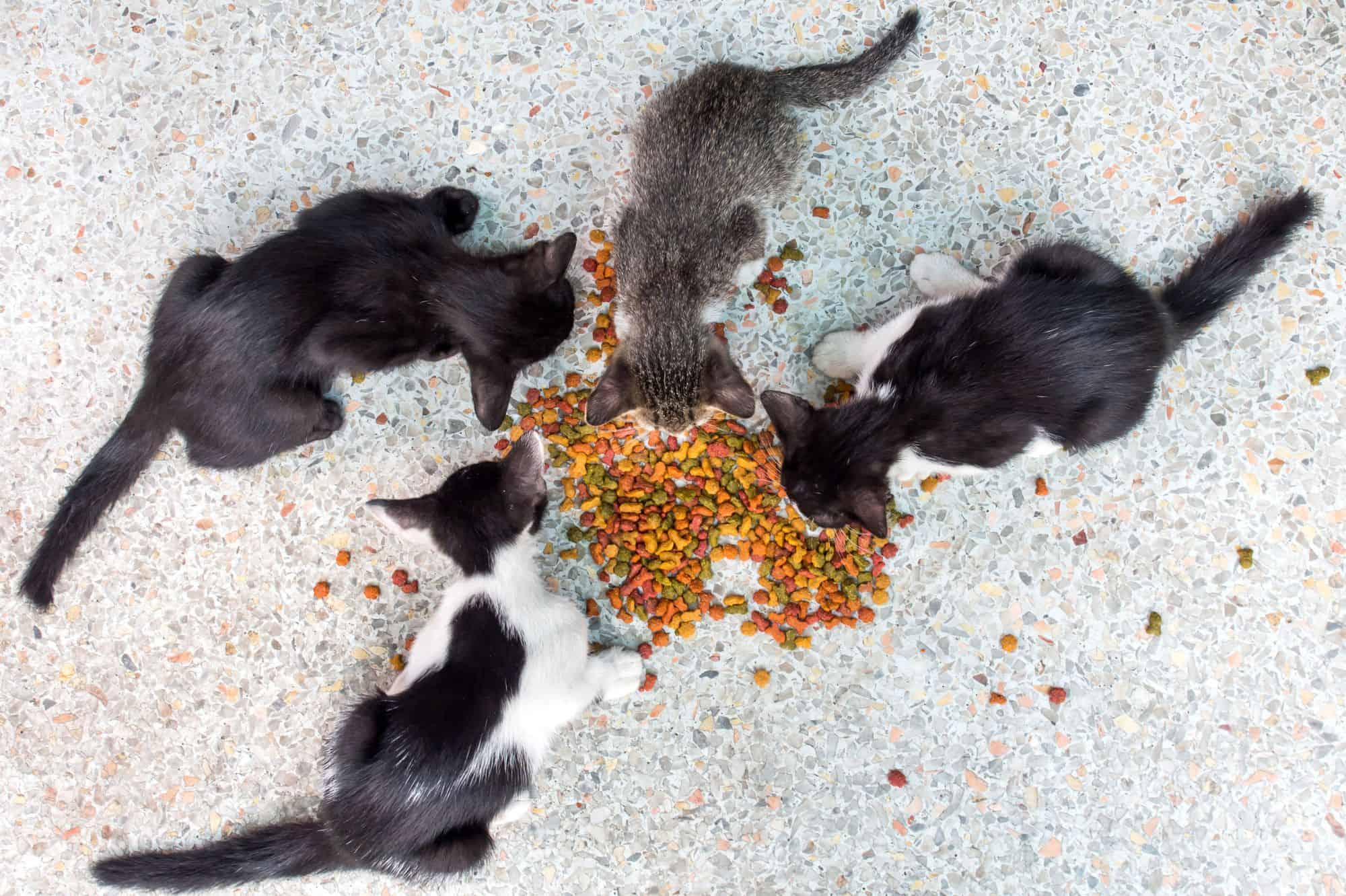Scientists wanted to test if kittens are able to quantify amounts of food. Many animals, including adult domestic cats, have the ability to judge quantities. In contrast, not much research has been done into whether or not kittens are able to understand amounts of food.
To answer this question, researchers looked at the food choices of pre-weaned kittens. Kittens were studied at the seven-week-old mark because that is their senses are fully developed. Only kittens that didn’t display laterality bias (going to the same side consistently) were included in the studies.
The study was split up in to two different types of tests. For the first test, 26 seven-week-old kittens were offered food that was place on two different plates. Each plate had a varying combination of food. For example, one plate might have one small 1 centimeter diameter dollop of food and the other plate much have three such dollops. There were 12 combinations in all.

After going without food or milk from their mother, each kitten was placed in a room up on a platform where the kitten could see the two food dishes. Researchers then discretely observed the kitten to see which plate of food they first interacted. An interaction was counted as either the kitten pawing, eating, or kicking the food.
For the second test, each kitten was offered two different plates of food that had the same amount of food but the sizes of the pieces of food were different.
The first test was designed to see if kittens displayed numerical quantity discrimination. When the difference between the number of dollops of food was big enough, kittens mostly chose the dish with the larger number of food pieces. Out of 26 kittens, 25 (or 96.1% of them) usually picked the plate with more pieces of food.

Gender (whether the kitten was male or female) did not play a role in kittens preferring the plates with more food pieces. What did affect the kittens preference for the plate of with more food dollops was the ratio. The researchers found that when the difference between the dollops was too small, the kittens did not discriminate.
The second test looked a size discrimination among kittens for food. For this experiment, a different cohort of kittens was presented with two plates of food. On each plate of food there was a circular shaped dollop of food. The diameter of the food dollop was different on each plate.
While not as strong as the quantity test, researchers found that 24 kittens (75%) consistently chose the plate with the larger diameter of food. Again, these resulted were more consistent when the relative ratio of the smaller diameter food and the larger diameter food was large enough.
In conclusion, the researchers determined that in general, the kittens could tell which plate had more food and they usually chose it. However, since the relative difference in amount affected which plate the kittens selected, this suggested that they are using a general sense of “more” or “less” rather than counting. This way of thinking is called an “analog magnitude system” rather than counting each item one-by-one, which is called an “object file system”.
The study concludes that domestic cats naturally know how to judge and pick between different amounts. Both kittens and adult cats naturally choose more food when given a choice unless the difference in amounts is too small.
The study:
Szenczi, P., Martínez-Byer, S., Chacha, J., Hudson, R., & Bánszegi, O. (2023). Quantity discrimination by kittens of the domestic cat (Felis silvestris catus). Animal Cognition, 1-8. https://doi.org/10.1007/s10071-023-01784-z







